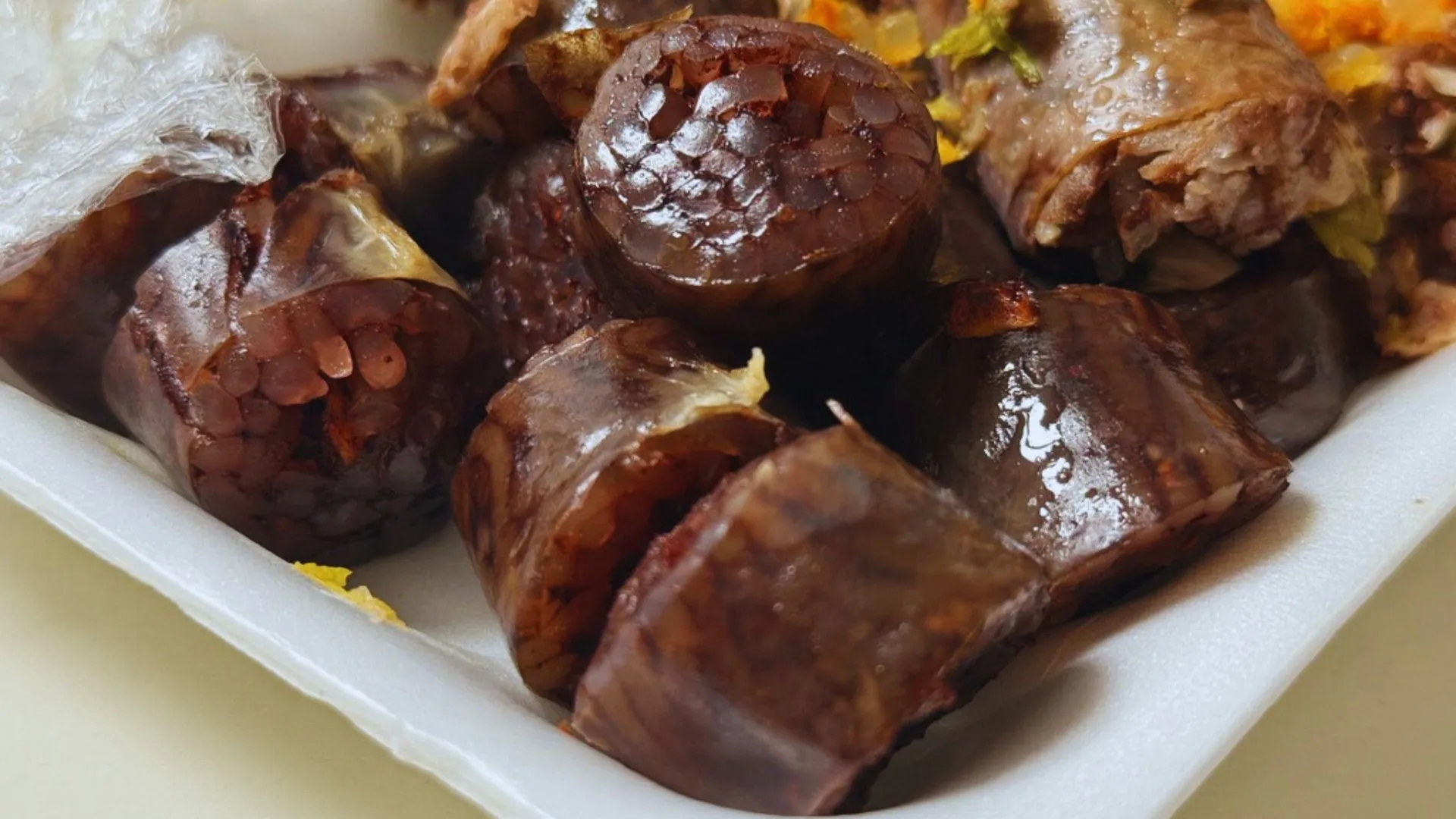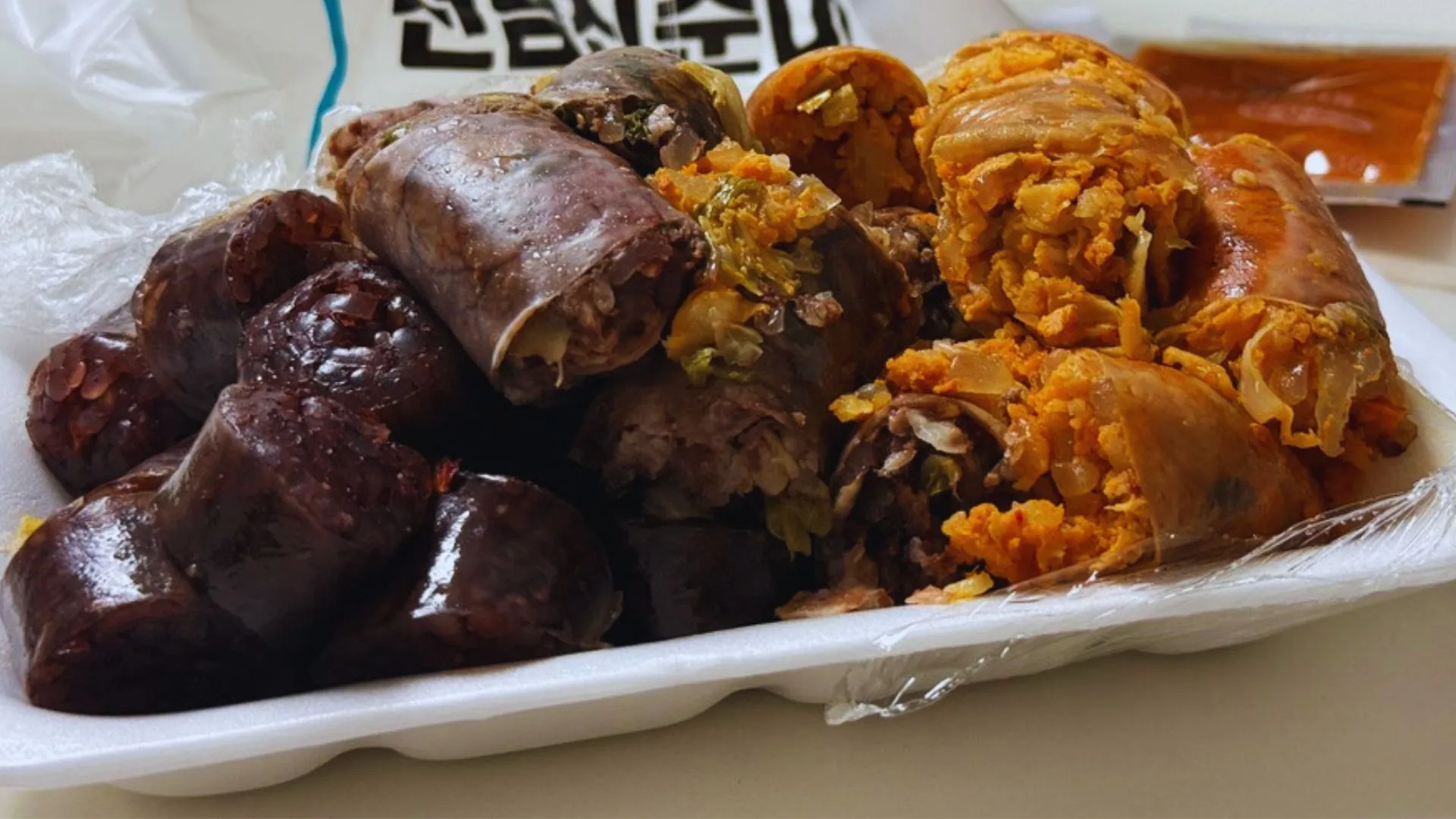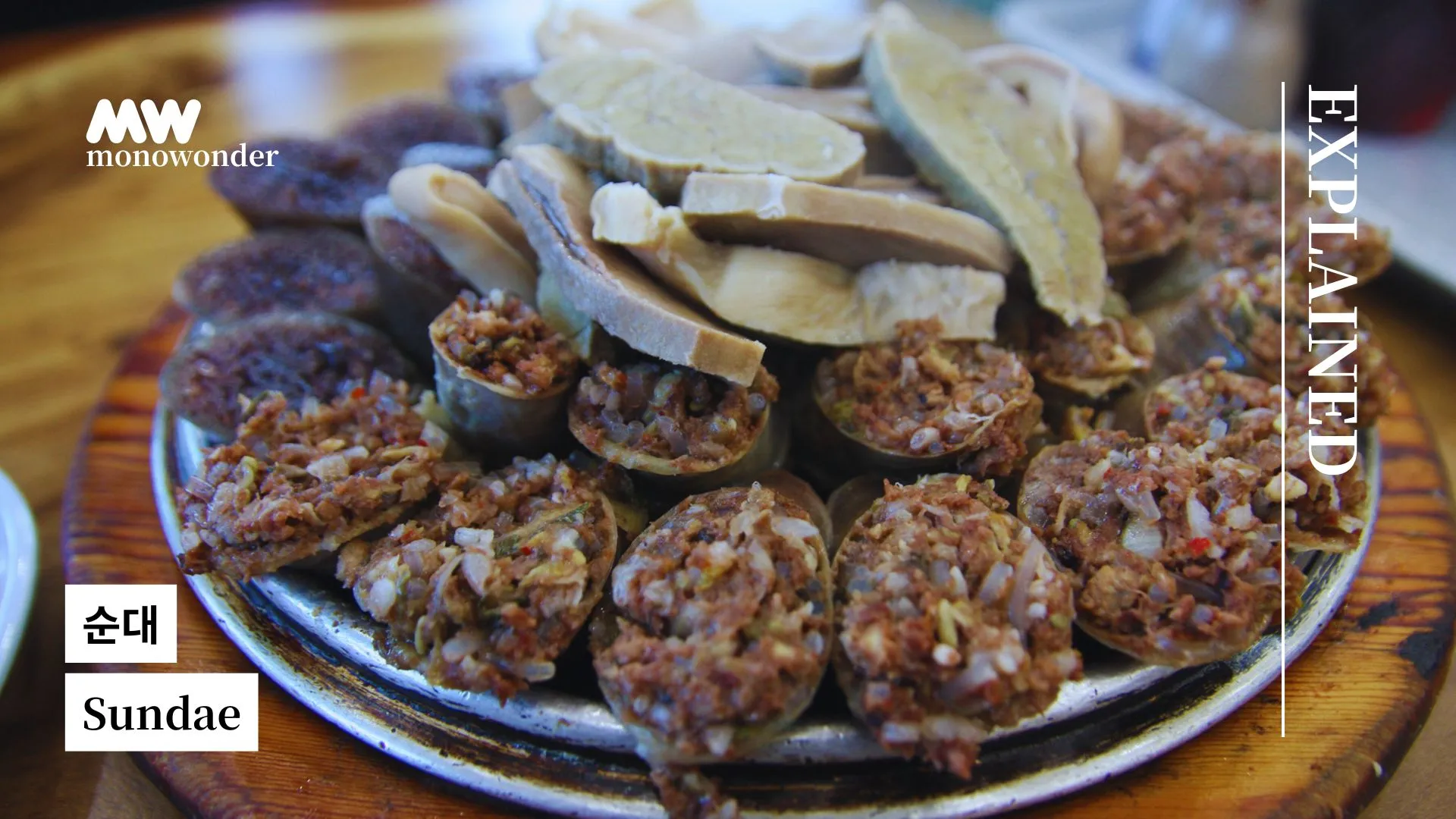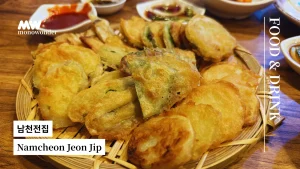Sundae (순대) is a Korean-style blood sausage that’s beloved across the peninsula. Casings of pig or cow intestine hold a hearty mix of noodles, rice, veggies, and sometimes blood—steamed until they’re tender yet satisfyingly chewy. Often sold from street stalls or snack bars, it’s comforting, a bit rich, and never bland.
What is Sundae?

Think of sundae (순대) as Korea’s soulful answer to blood sausage, where the highlight isn’t just the blood, but the texture. Vendors carefully clean the intestines—salt, flour, flipped inside-out—to remove unwanted taste and give it that clean, snappy bite. Inside, you’ll find sticky rice, glass noodles (dangmyeon), tofu, bean sprouts, scallions, seasonings, and sometimes fresh blood or meat, all steamed until the casing holds a springy, savory center.
Street versions tend to stick to basics—noodles and rice—highlighting texture and simplicity. Sit-down places often go bold, packing dumpling-style fillings for deeper flavor. Despite the offal and organs, sundae doesn’t taste heavy or gamey. The starches balance the iron-rich notes, making it feel lighter than western sausages.
Sundae isn’t just a snack—it shows up in stir-fries (sundae‑bokkeum), soups (sundae‑guk), and fusion dishes. Vendors often pair it with boiled offal—liver, lung, stomach—and dipping sauces like salt‑pepper in Seoul or vinegar-gochujang elsewhere. And yes, you’ll see it alongside tteokbokki and twigim, soaking up sauce or laid into spicey soup, making it a full-on flavor experience.
Where Does Sundae Come From?

Sundae stretches back to Goryeo-era Korea (918–1392), where wild boar intestines were stuffed with grains and meat. By mid-Joseon times, cookbooks like Siuijeonseo and Gyuhap chongseo included recipes for pork intestine puddings and blood-filled casing dishes. Originally, sundae was festive fare—enjoyed at celebrations and family gatherings, a sign of abundance.
After the Korean War, when meat was scarce, cooks swapped in glass noodles for more expensive fillings. That frugal switch turned sundae into a wallet-friendly street staple, sold in pojangmacha and snack bars in the 1950s onward. Rather than fade out, sundae surged in popularity, becoming a go-to comfort food.
Different parts of Korea built on that history: Abai-sundae from Hamgyong is oversized and blood-rich; Gangwon introduced squid-cased sundae; Jeju has fish-bladder versions; Yongin’s Baegam-sundae skips the blood completely . In Seoul, Sillim-dong grew into Sundae Town—a whole food district specializing in spicy stir-fried sundae bokkeum, bustling with dozens of shops since the 1990s . What began as a need-based dish evolved into regional pride, shining through variety and creativity.
Why Do People Love It?

Sundae’s charm is in its layered appeal: a clean casing snap that gives way to a chewy, subtly hearty filling. Textural playfulness is key—it’s not just sausage, it’s an experience with every bite.
The contrast continues in flavor. Light starchiness cushions iron notes from blood or organs, while bright dipping sauces—salt pepper, soy, vinegar-gochujang—lift and refresh each mouthful. On cold evenings, a warm plate of sundae and boiled offal sipped with broth hits comfort-food status. It’s a communal food, often served with cheers at pojangmacha tents alongside makgeolli or soju.
Sundae’s surprising adaptability keeps fans coming back. It transforms into fiery stir-fries, gets dunked in brothy soups, even lands on chef-crafted plates with cheese or floral garnishes. It balances nostalgia and novelty, tradition and trend. One writer described its texture as “mochi-like,” warm and rich in a way that soothes and energizes. Whether it’s the simplest slices or an elevated tasting menu version, sundae feels like home, no matter the mood.
Wonder Point
If you want a taste of Korean comfort food that’s storied and soulful, sundae delivers. Try it fresh from a pojangmacha, dipping each slice in salt-pepper or vinegar-gochujang, then follow with a steaming bowl of sundae-guk. Don’t miss regional varieties—like squid, fish-cased, or even blood-free Baegam-sundae. It’s chewy, hearty, full of character—and definitely worth the adventure.





